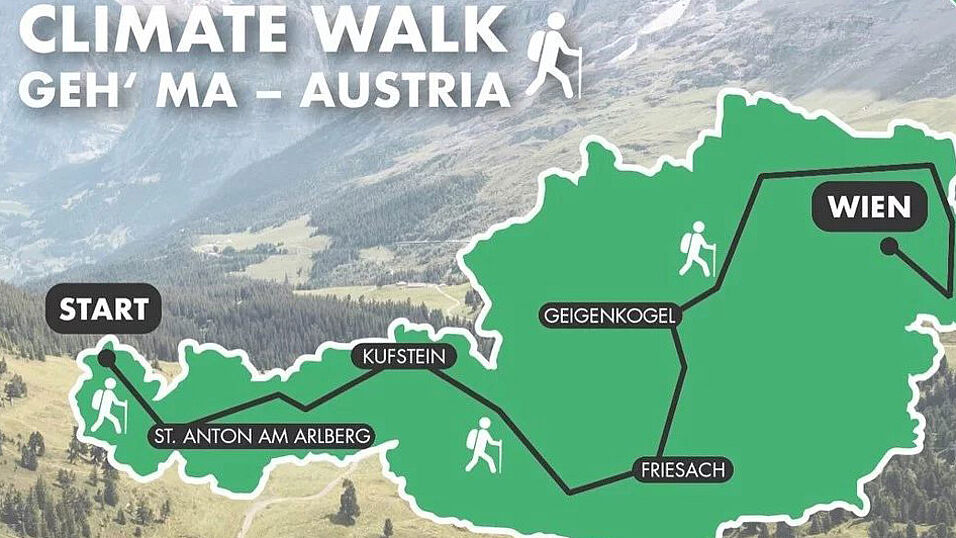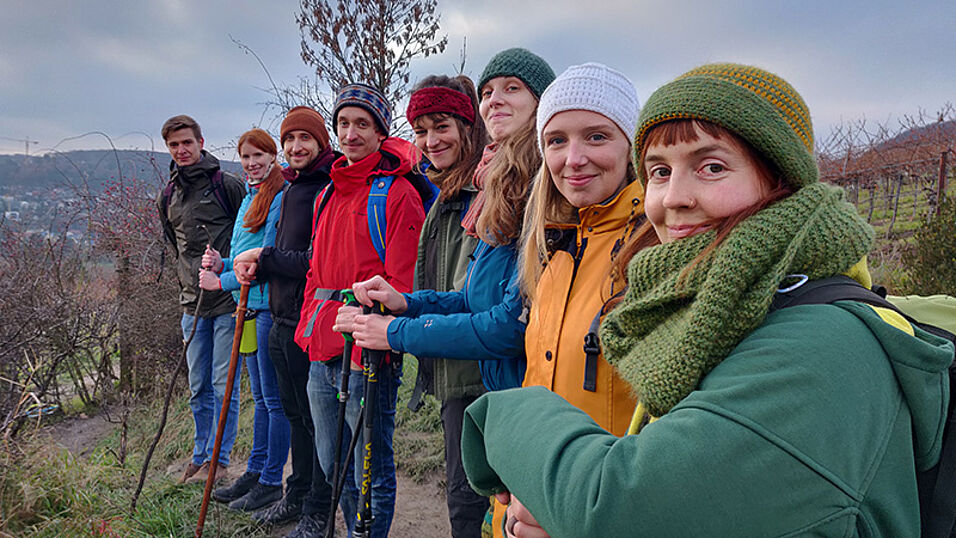Anfang Juli 2021 startete der erste Austrian Climate Walk: Studierende und Aktivist*innen erwanderten, erforschten und diskutierten den Klimawandel, während sie von Dornbirn nach Wien durch alle neu Bundesländer wanderten. Die Fakultät für Geowissenschaften, Geographie und Astronomie sowie das Institut für Geographie und Regionalforschung sind Kooperationspartnerinnen des Projekts.
Für die letzten Kilometer luden die "Wanderers of Changing Worlds" zu einer "Wanderdemo" entlang des Rings und im Sigmund-Freud-Park ein. Am 17. September findet zudem ein Homecoming-Event in Zusammenarbeit mit Steady Steps im Markhof (1030 Wien statt) - Infos folgen in Kürze über den Climate Walk Facebook-Account.
"Wir möchten an diesem Tag nicht nur den Abschluss des diesjährigen Walks feiern, sondern auch die Vielfalt an Initiativen und Organisationen aufzeigen, die sich für Klimaschutz und damit für unsere Zukunft einsetzen", so die Aktivist*innen.
Auch die zahlreichen Begegnungen mit Interessierten und anderen Aktivist*innen während des Walks, aber auch traumhafte Bergmomente und musikalische Höhepunkte sind über den Climate Walk Facebook-Account nachzulesen.
Homecoming-Event
Für den 17. September ist zudem ein Homecoming-Event geplant, bei dem der Abschluss des ersten Austrian Climate Walks gefeiert wird, bevor nächstes Jahr der European Climate Walk startet: Die Aktivist*innen planen, Europa vom Nordkap bis nach Portugal zu durchwandern. „Wir sind ein kleines Team aus Wissenschafter*innen und Aktivist*innen, die den Klimawandel und verschiedene Sichtweisen darauf wandernd erforschen wollen – on the move und entlang des Weges, sozusagen“, erklärt Martina Perzl von den „Wanderers“.
Bis dahin sind jedoch noch einige Hürden zu nehmen, unter anderem sucht das Team nach Sponsoren und hofft darauf, dass ihre Crowdfunding-Kampagne mehr Zulauf hat.



